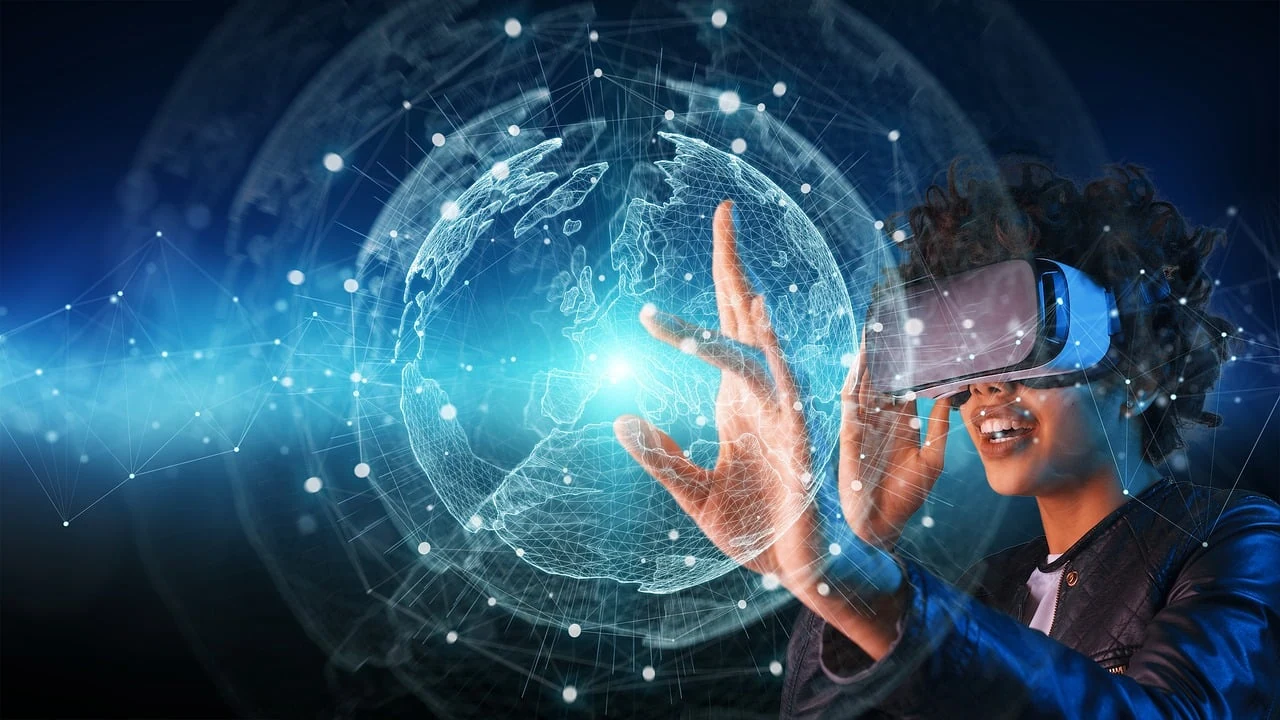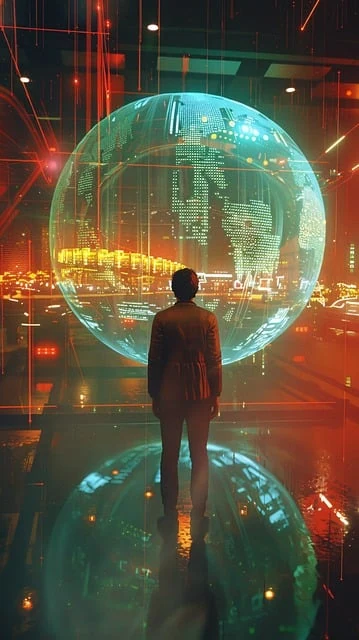Virtual Reality (VR) and Augmented Reality (AR) have emerged as transformative technologies with immense potential to revolutionize education in the digital era. VR transports learners to entirely new environments. Meanwhile, AR enriches the tangible world, seamlessly integrating digital information to augment our sensory perception. These innovative technologies help create interactive and immersive learning experiences.
Bringing these visions to life requires powerful yet accessible tools. If you’re looking to create compelling e-learning content, software simulations, or interactive presentations that can leverage the principles behind immersive learning, ActivePresenter offers a comprehensive suite for developing engaging educational materials.

What is Virtual Reality (VR)?
Virtual reality (VR) is a three-dimensional, computer-generated simulation that mirrors aspects of the real world or conjures entirely new, fantastical landscapes. Through a VR headset, often referred to as goggles, users can interact with this virtual environment in a way that feels tangible and lifelike. VR’s potential extends far beyond entertainment, offering transformative applications in education and professional training by simulating complex procedures or historical events that are otherwise challenging or impractical to reproduce in reality.

Image by Pixabay
Here are some examples of VR applications:
- Education: VR can provide interactive simulations of scientific experiments, reenactments of historical battles, and visualizations of abstract concepts, etc.
- Gaming: VR headsets transport gamers directly into the game’s universe, offering an unprecedented level of immersion and interactivity.
- Entertainment: VR can offer unique experiences like attending virtual concerts, or exploring renowned global landmarks while staying at home.
Recommend to see Explore the Benefits and Drawbacks of Virtual Reality (VR).
What is Augmented Reality (AR)?
Remember Pokémon Go? The 2016 mobile game that captivated millions? It’s a stellar example of augmented reality (AR) at play. By superimposing digital creatures (Pokémon) onto our world, it turned neighborhood strolls into global scavenger hunts. Users use their smartphones to spot Pokémon in their actual surroundings. Then, navigate the real-world map to capture them. In essence, AR is a technology that enriches our reality by layering virtual components – such as data or visuals – over it, creating interactive and immersive experiences.

Image by Pixabay
Recommend to see Augmented Reality (AR): Benefits and Examples.
What is the Difference between VR and AR?
If you are still confused about VR and AR, let’s take a look at the table below:
| Virtual Reality | Augmented Reality |
| Be completely virtual. | Use real-world settings. |
| The system controls VR users. | AR users can control their interaction with the real-world environment. |
| Require headsets. | Require a smartphone or other devices. |
| Only enhance virtual reality. | Enhance both the virtual and real world. |
In summary, VR replaces your reality, while AR adds to it, both offering unique and interactive experiences.
Applications of VR and AR in Education
VR and AR are applied in a wide range of educational fields:
Medical Education
VR and AR technologies are revolutionizing medical education. Through VR, students can practice medical procedures and surgeries in a risk-free, virtual setting, honing their skills without the consequences of real-life practice. AR allows for an enhanced study of anatomy, where students can visualize and interact with 3D models of the human body, gaining a deeper understanding of physiological structures and systems. These technologies not only facilitate a more engaging learning process but also prepare future medical professionals for the complexities of patient care with greater confidence and competence.
History and Culture
Virtual and Augmented reality technologies have opened up possibilities in historical education. With VR, we can recreate historical battles and cultural sites with stunning accuracy, allowing students to step back in time and experience these events as if they were there. AR offers learners a window into the past by adding a layer of historical reconstructions onto present-day locations. Apart from making learning about history more engaging, VR and AR provide a powerful way to preserve and explore the heritage that has been lost to time.
Language
VR and AR can also change how students study and practice foreign languages. They simulate a virtual environment where learners can interact with virtual native speakers. These technologies can place learners in realistic scenarios. For example, ordering food and beverages in a restaurant or conversing with a dentist. So learners can enhance their conversational skills and cultural understanding. This approach helps improve language proficiency by providing practical experience in a controlled setting.
Chemistry
In the age of virtual and augmented learning, learners are allowed to conduct hands-on experimentation in a virtual laboratory. Mix substances and gain insights into the intricate interactions between them. This approach ensures a safe and risk-free learning experience. It also helps eliminate the hazards associated with traditional laboratory settings. Moreover, these technologies are cheaper than traditional laboratory experiments because schools won’t have to pay for a wide range of chemical substances.
Astronomy
Astronomy education will become extremely engaging thanks to virtual and augmented reality technologies. With VR and AR, students can embark on a guided tour of the solar system, visiting planets, the moon, and other celestial bodies. Learners can land on and explore the planet’s surface, for example, Mars, which is difficult to occur in real life. Beyond our solar neighborhood, VR extends the educational horizon to include a virtual tour of galaxies. Participants can learn about different types of galaxies and explore their structures, compositions, and interactions with others. These technologies help us connect with the universe, making the once-distant stars a touchable reality.
Conclusion
VR and AR technologies have the potential to revolutionize the learning experience. They offer unprecedented levels of interactivity and immersion, engaging learners in a manner that traditional methods cannot match. These innovative tools are poised to become increasingly integral in future education, providing students with captivating and immersive learning environments that enhance comprehension and engagement.
You may want to read: